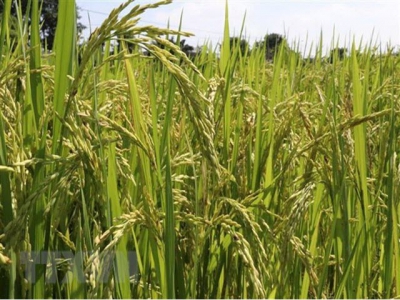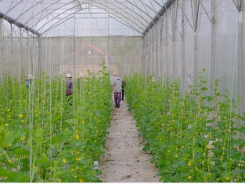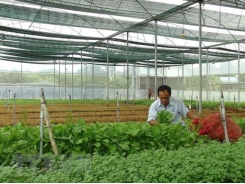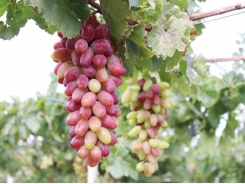Both opportunities, challenges forecast for agricultural export

Vietnam's agricultural export will face both opportunities and challenges this year (Photo: VNA)
Hanoi (VNA) – Vietnam’s rice exporters could be set for a big first quarter, with demand from the Philippines and Indonesia being forecast to increase due to the impact of recent natural disasters.
The Agro Processing and Market Development Department under the Ministry of Agriculture and Rural Development said in a recent press briefing it predicted a mixed year for the country’s key farm products.
Rice in particular looks set for an export bump thanks to the Philippines removing import restrictions, leading to 166 Filipino firms applying to purchase 1 million tonnes of rice. Many of these firms intend to buy the grain from Vietnam.
Under a new rice policy, the Philippines will impose a tariff of 35 percent on rice from ASEAN countries while the rate from non-ASEAN exporters, 50 percent.
However, Vietnam will also face fierce competition from regional rivals like Cambodia, Myanmar and Thailand. Additionally, China – a major market of Vietnamese rice – has changed its cross-border trade management and boosted investment in rice production in regional countries like Cambodia, Myanmar and Thailand. That is likely to pressure rice shipments, the department said.
Regarding fruit exports, Acting Director of the department Nguyen Quoc Toan said overseas shipments of fruits hit a record of 3.8 billion USD in 2018. As fruit exports benefited from many favourable conditions last year, cultivators have sharply increased the output of many fruits like lychee, longan, orange, mango and rambutan.
However, he admitted fruit exports are still too reliant on the Chinese market, adding China has tightened import management in recent months.
In 2019, fruit, vegetables and food will have to satisfy stricter requirements to be imported into China, Toan noted.
Pepper prices are forecast to rebound slightly this year as the output in some big exporting countries, including Vietnam, Brazil, Indonesia and India, is likely to decline from 2018. Vietnam is expected to produce 175,000 tonnes of black pepper and 25,000 tonnes of white pepper in 2019.
Meanwhile, rubber exports rose 13.3 percent in volume but down 7 percent in value last year. Rubber prices have tended to increase slightly in line with the developments in the global market since last December, but they are unlikely to hike strongly in 2019 due to a lack of support factors and weaker Chinese demand, the Agro Processing and Market Development Department said.
Difficulties are also predicted for Vietnam’s tea exports, which fell 8.6 percent in volume and 4.1 percent in value year on year in 2018, it noted, pointing to the oversupply in the global market, almost stagnant tea demand and strict requirements in importing countries.
In terms of aquatic exports, Toan said the EU-Vietnam Free Trade Agreement will take effect this year with tariffs on about 90 percent of Vietnamese aquatic products destined for the EU reducing to zero percent in three or four years. This is a considerable advantage for aquatic products from Vietnam as the EU’s tariffs on similar products of other countries stand at about 14 percent.
Besides that, demand in some markets like the Republic of Korea or ASEAN countries is forecast to soar in 2019. Therefore, Vietnam is likely to record a surge in aquatic exports this year to reach 10 billion USD, the official added.
Có thể bạn quan tâm
Phần mềm

Phối trộn thức ăn chăn nuôi

Pha dung dịch thủy canh

Định mức cho tôm ăn

Phối trộn phân bón NPK

Xác định tỷ lệ tôm sống

Chuyển đổi đơn vị phân bón

Xác định công suất sục khí

Chuyển đổi đơn vị tôm

Tính diện tích nhà kính

Tính thể tích ao hồ



 VN shows great potential for processed vegetable, fruit…
VN shows great potential for processed vegetable, fruit…  Grape variety approved for cultivation
Grape variety approved for cultivation